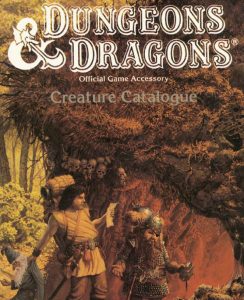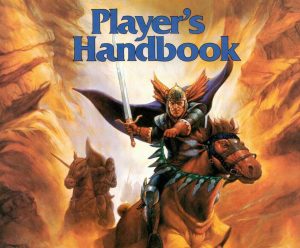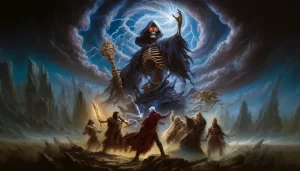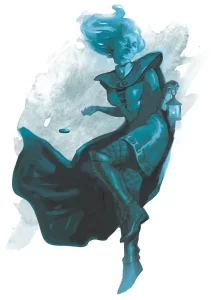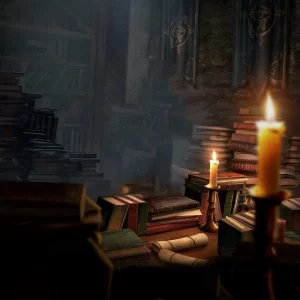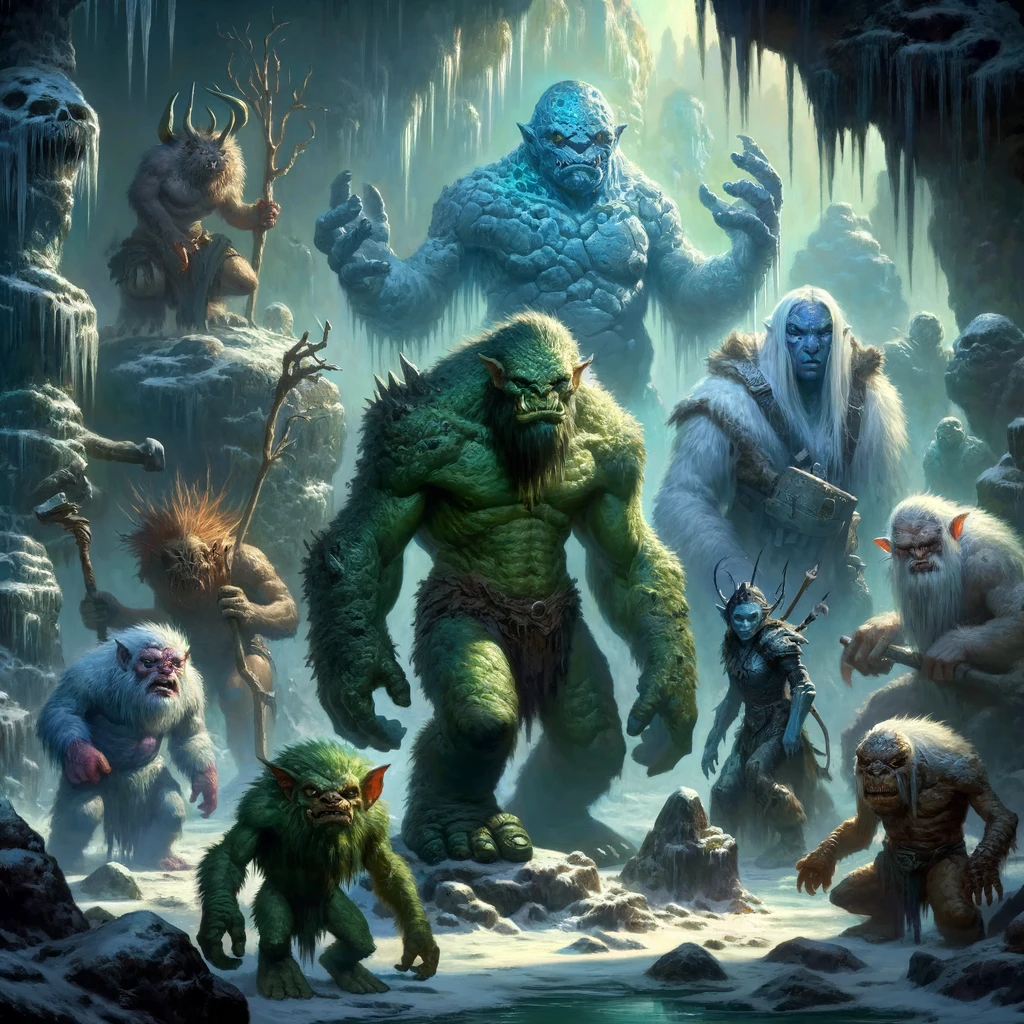
Trolls are large, monstrous creatures with an incredible capacity for regeneration. This ability allows them to regrow lost limbs and heal grievous wounds at a remarkable rate, making them formidable opponents. Their regenerative capability shapes their ecological role in the D&D universe, allowing them to inhabit a variety of environments ranging from forests and swamps to mountains and underground lairs.
The diet of trolls is primarily carnivorous, consisting of anything they can catch and eat, including animals, monsters, and even humanoids. This omnivorous nature can lead trolls to venture into human settlements in search of food, causing them to be seen as grave threats. Their insatiable appetite drives them to constant hunting, and they often dominate their territory by out-competing other predators.
Trolls typically lead solitary lives, although they may gather in loose groups known as bands. In these bands, a hierarchy may form based on physical strength and dominance, with the most potent troll often leading. They have minimal social structures and no known cultural practices, with survival and consumption being their primary focus.
Their reproductive habits are not well-detailed in most D&D literature, but some sources imply that trolls can reproduce through a form of budding, where a piece of a troll can grow into a new troll if not destroyed. This might contribute to their rapid population growth in areas where they are not kept in check.
In terms of interaction with other species, trolls are mostly seen as a menace. Their presence in an ecosystem can severely unbalance the natural order, as they may deplete food sources for other predators and even endanger entire species. Adventurers and local populations often find themselves forced to deal with troll infestations to preserve the balance of their local ecosystems.
Furthermore, trolls' regeneration has made them subjects of interest for magical experimentation. Wizards, alchemists, and other magic-users might seek out trolls or troll parts to study, looking to harness or replicate their incredible healing abilities. This has led to the creation of various troll-related magical items and spells in the D&D world.
The ecology of the troll in D&D is thus a rich and fascinating topic. Their unique characteristics, aggressive nature, and the implications of their existence on the world around them have made trolls an enduring and iconic part of the game's lore. Whether seen as mere beasts or as subjects of magical intrigue, trolls offer a complex and nuanced addition to the diverse ecology of the D&D universe.
There are additional aspects to consider that shed light on their complex existence.
Subspecies and Variations
Trolls are not a uniform species. Various subspecies and variations exist, each with unique ecological niches. For example:
- Forest Trolls: These trolls are adapted to forested environments and often have a greenish hue that allows them to blend in with the foliage.
- Cave Trolls: Dwelling in dark caves and subterranean realms, these trolls are more adapted to life underground.
- Ice Trolls: Found in cold, arctic regions, ice trolls have developed adaptations to survive in freezing temperatures.
- Two-Headed Trolls: This rare mutation results in a troll with two heads, which can make them even more ferocious.
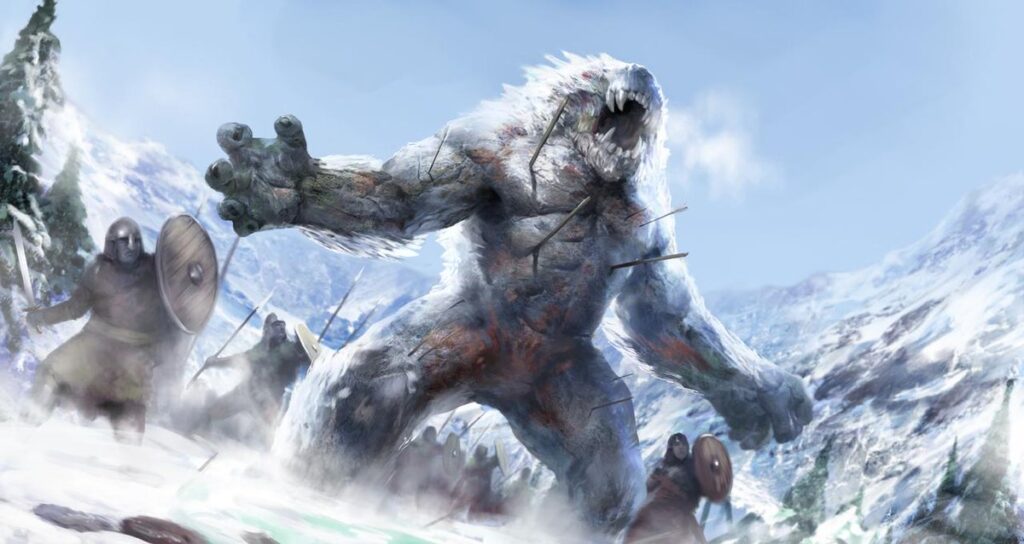
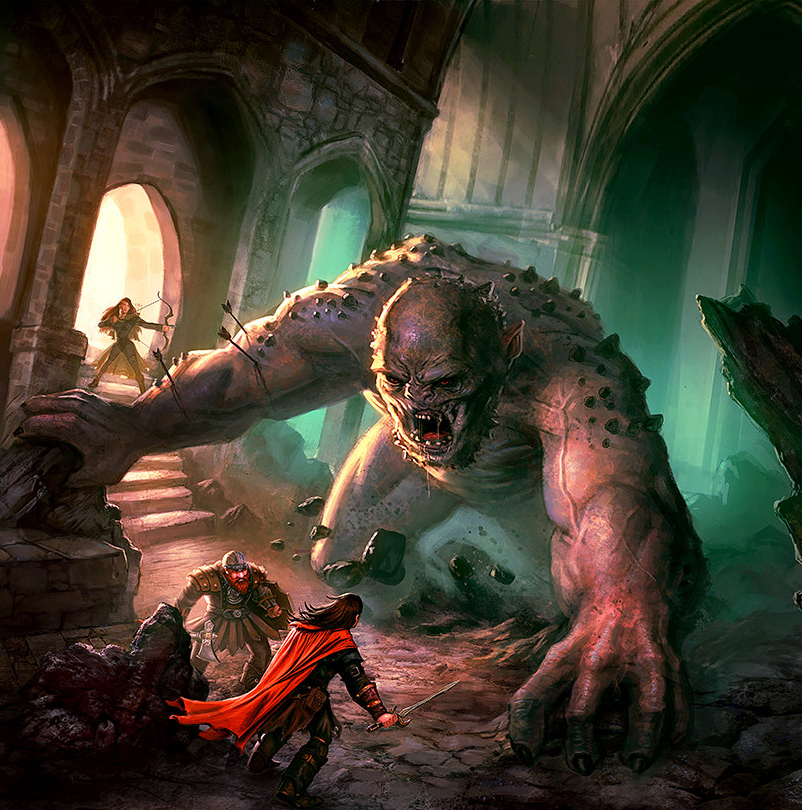
Ecological Impact
Trolls' impact on the ecosystems they inhabit can be both significant and devastating. Their voracious appetites can lead to overhunting, depleting food resources not only for themselves but also for other predatory species. Without natural predators capable of killing them (due to their regeneration), troll populations can quickly grow out of control if left unchecked.
Natural Predators and Threats
While trolls can regenerate from most injuries, they do have vulnerabilities. Acid and fire are known to hinder their regenerative abilities, allowing them to be killed. Some creatures, such as certain types of dragons, might possess the necessary means to hunt trolls. Intelligent races often see trolls as threats and may organize hunting parties to keep their numbers in check.
Relationship with Other Races
Trolls are generally hostile towards most intelligent races, attacking on sight. However, there have been instances where more intelligent trolls have formed uneasy alliances or served powerful beings, such as hags, giants, or evil spellcasters. These relationships are often based on fear or coercion, as trolls lack the social structure and inclination for cooperation typically found in other species.
Magical and Alchemical Uses
The regenerative properties of trolls have fascinated many in the magical community. Alchemists may seek troll blood or tissue for potions and elixirs, while wizards might study trolls to unlock the secrets of their regeneration. This interest has led to various magical items and spells inspired by trolls, adding another layer to their ecological role.
Cultural Interpretations
While trolls lack a culture of their own, their presence in various cultures' folklore and legends is significant. They are often portrayed as terrifying monsters or embodiments of primal, destructive forces. Some societies might even have rituals or customs related to warding off trolls or appeasing them.
The ecology of trolls in Dungeons & Dragons is multifaceted and deeply intertwined with the world's biology, culture, and magic. Their presence can shape ecosystems and inspire fear and fascination in equal measure, making them a compelling and complex part of the D&D universe. Whether as feared predators, objects of magical study, or mythic symbols, trolls continue to capture the imagination of players and dungeon masters alike.
